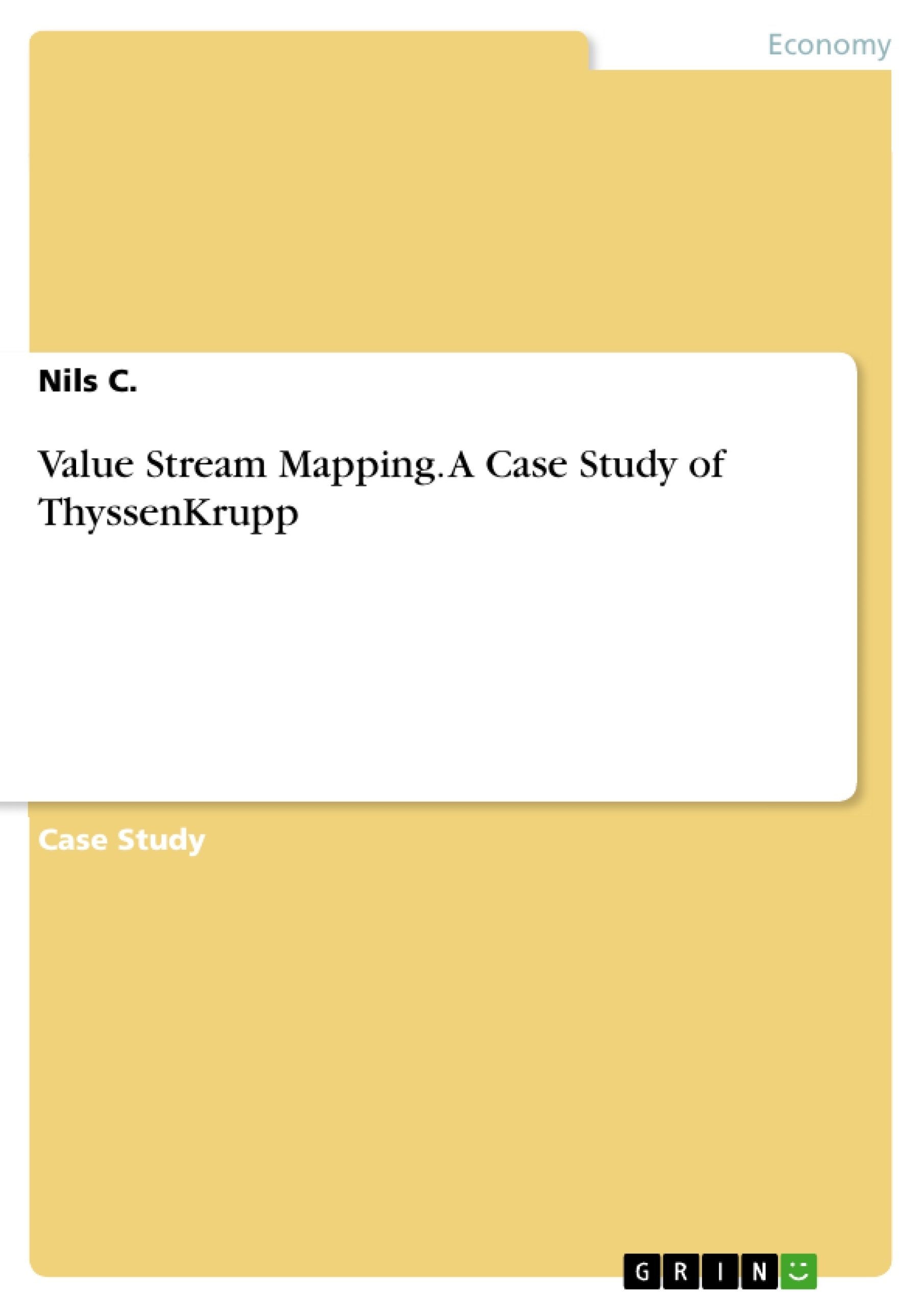This paper demonstrates and analyses the current state of the material and information flow across the supply chain at ThyssenKrupp. The objective of the prepared VSM is to identify causes of waste and reduce them in order to improve the production processes and meet the customer demands. Potential sectors of improvement are identified as Kaizen bursts. By developing and implementing of a desired future state map with a more efficient overall production system, ThyssenKrupp can sustainability improve the productivity and remain competitive. The improvements are focused on takt time, change over time and inventory levels, which leads to a reduction of the lead time.
The automotive industry is one of the largest and competitive sectors in Germany. It offers great opportunities for the application of lean tools to eliminate waste, improve operational processes and gain competitive advantages. ThyssenKrupp are a key supplier in the automotive industry and utilise Value Stream Mapping (VSM) to highlight and reduce non-value-added activities in their manufacturing operation.
Table of Contents
Abstract
1. Introduction
1.1 ThyssenKrupp
2. Literature Review
2.1 Value Stream Mapping
3. Value Stream Map Methodology
3.1 Current State Map
3.2 Current State Map with Opportunities
3.3 Future State Map
4. Conclusion
References
- Citar trabajo
- Nils C. (Autor), 2021, Value Stream Mapping. A Case Study of ThyssenKrupp, Múnich, GRIN Verlag, https://www.grin.com/document/1019667
-

-

-

-
¡Carge sus propios textos! Gane dinero y un iPhone X. -

-
¡Carge sus propios textos! Gane dinero y un iPhone X. -

-
¡Carge sus propios textos! Gane dinero y un iPhone X. -

-
¡Carge sus propios textos! Gane dinero y un iPhone X. -

-
¡Carge sus propios textos! Gane dinero y un iPhone X.

